ALMA image of the distribution of the organic molecule HC3N at intermediate-to-lower elevations in the atmosphere of Saturn’s moon Titan. The denser, brighter concentrations are oriented more evenly about the poles than is observed for HC3N at higher elevations. The globe outline represents Titan’s orientation at the time of the observations.
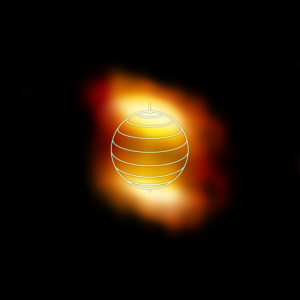
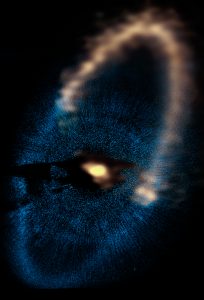
Fomalhaut Disk
The narrow dust ring around the bright star Fomalhaut. Peach at top is the ALMA image, and the blue at bottom is Hubble Space Telescope image. The star is at the location of the bright gold emission at the center of the ring.
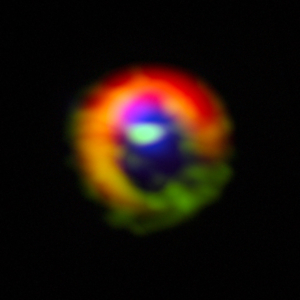
ALMA Sees Baby Solar System
Observations made with the Atacama Large Millimeter/submillimeter Array (ALMA) telescope of the disc of gas and cosmic dust around the young star HD 142527, showing vast streams of gas flowing across the gap in the disc. These are the first direct observations of these streams, which are expected to be created by giant planets guzzling gas as they grow, and which are a key stage in the birth of giant planets. The dust in the outer disc is shown in red. Dense gas in the streams flowing across the gap, as well as in the outer disc, is shown in green. Diffuse gas in the central gap is shown in blue. The gas filaments can be seen at the three o’clock and ten o’clock positions, flowing from the outer disc towards the centre. The dense gas observed is HCO+, and the diffuse gas is CO. The outer disk is roughly two light-days across. If this were our own Solar System, the Voyager 1 probe — the most distant manmade object from Earth — would be at approximately the inner edge of the outer disk.
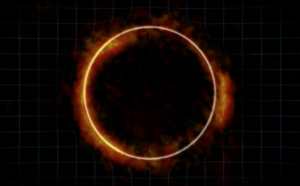
Animation of a Gravitational Lens Creating an Einstein Ring
Animation demonstrating how the gravity from a massive foreground galaxy can bend the light of a more distant galaxy. If the two galaxies line up just right, the result is a highly distorted image of the distant galaxy known as an Einstein ring. The radio image portion of the video is of galaxy SDP.81, which was imaged by ALMA as part of the telescope’s Long Baseline Campaign.
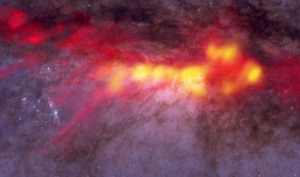
NGC 253: Why Starburst Galaxies Burst
Animation of ALMA data reveals a diffuse envelope of carbon monoxide gas (shown in red), which surrounds stellar nurseries — regions of active star formation (in yellow). By dissecting these regions with ALMA, astronomers are uncovering clues to the processes and conditions that drive furious star formation. The ALMA data are superimposed on a Hubble image that covers part of the same region.
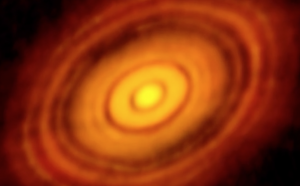
NRAO Video Webcast: HL Tau
NRAO Director Tony Beasley discusses the impact of ALMA’s new high resolution observations of HL Tau.





